August 2024
Significant Weather Events:
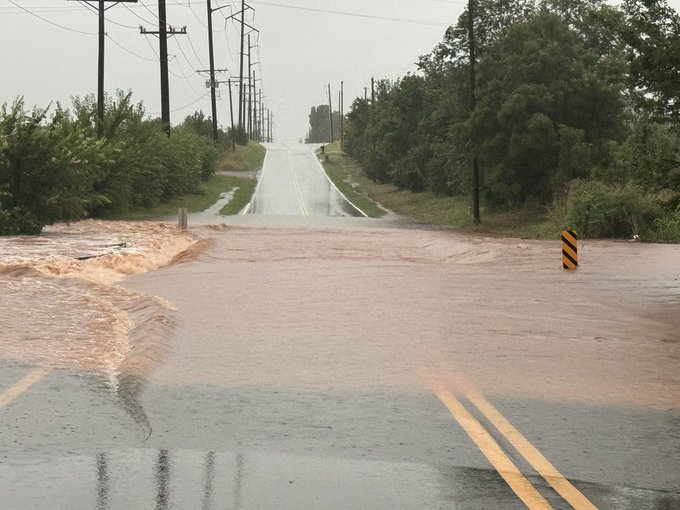

Severe weather is not most common in August, but large differences in temperatures along a storm system can result in particularly strong and damaging winds. In August just over 250 reports of severe winds were reported across the Southern Region, with most of these reports being concentrated in the northern states of the Region. About 25 severe hail reports were also seen in Oklahoma and Arkansas as several storm systems from the Central Plains made it down to the two states.
In the case of August 11th, storms formed overnight along the western border with Texas. The storms strengthened and moved toward central Oklahoma by daylight on the 12th, bringing flooding rains and strong winds. It continued to rain for over ten hours in central Oklahoma, and in this time Oklahoma City measured 6.58 inches of rainfall, which is the highest daily total for August and 7th all-time highest. Some areas in Cleveland County, OK received as much as 9.94 inches!
Unfortunately though, most areas of the Southern Region did not see rainfall totals anywhere near this. In west-central Texas, where drought degradation was the worst this month, AgriLife Today noted that grasses are turning brown due to lack of rainfall and livestock were being culled due to drought. In many other parts of Texas, though, things are faring better than the past couple of years. Overall, drought has been better than years past, resulting in an optimistic outlook for cotton. Cotton harvest is wrapping up in the southern portions of the state; meanwhile the northern portions need one more good rain for the cotton to survive to harvest.
Temperature:
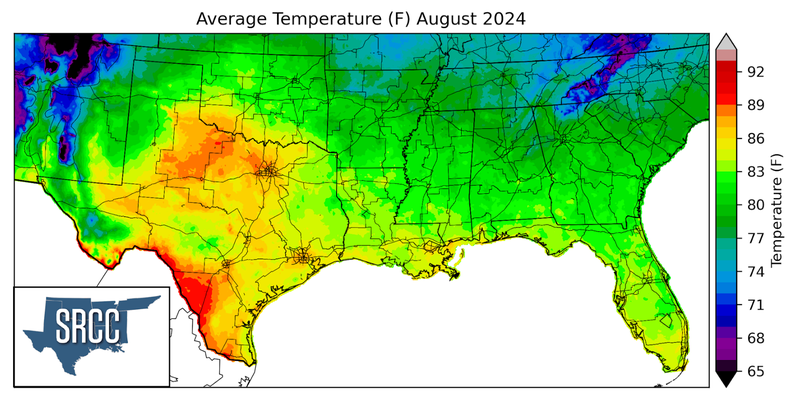
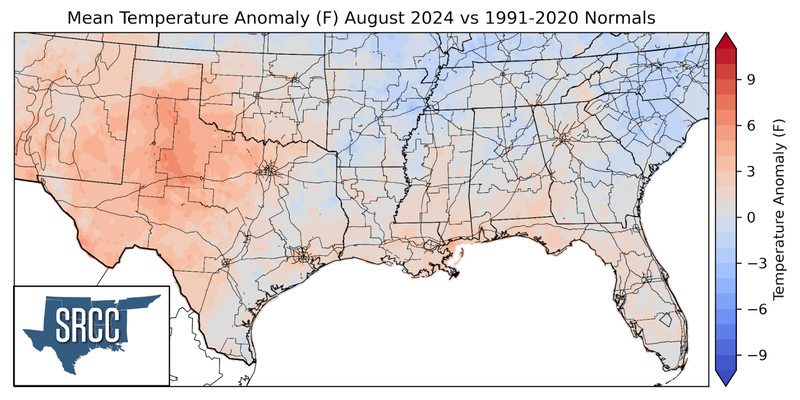
Temperatures were above normal in the western and coastal portions of the Region while the Eastern portions saw temperatures slightly below normal. The highest temperature departure from normal was observed in west-central Texas where temperatures were six degrees Fahrenheit above normal. Temperatures were warm to start out the month, with hot temperatures throughout the first full week of August. By August 9th, though, a strong cold front swept through the region cooling things down for a bit. But this was short-lived, as a high-pressure system quickly set up and sat over the region through the middle of the month. This brought high daily average temperatures, especially in Texas, of 90 degrees Fahrenheit and above. By the end of the month, things cooled down for the eastern portions of the region, but the Texas oven remained on, with daily average temperatures in the Texas Panhandle nine degrees above normal. This all resulted in August’s average temperature for the Southern Region ranging from 76 to 86 degrees in most places. The coldest monthly temperatures for August were found in the Great Smoky Mountains of Eastern Tennessee where temperatures were as cool as 70 degrees Fahrenheit.
Precipitation:
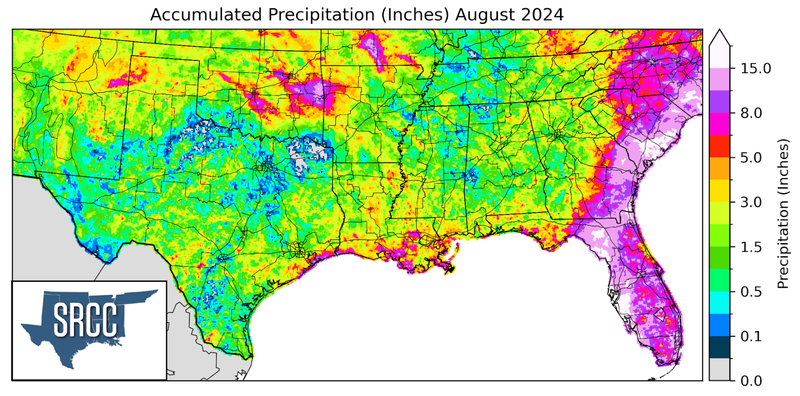
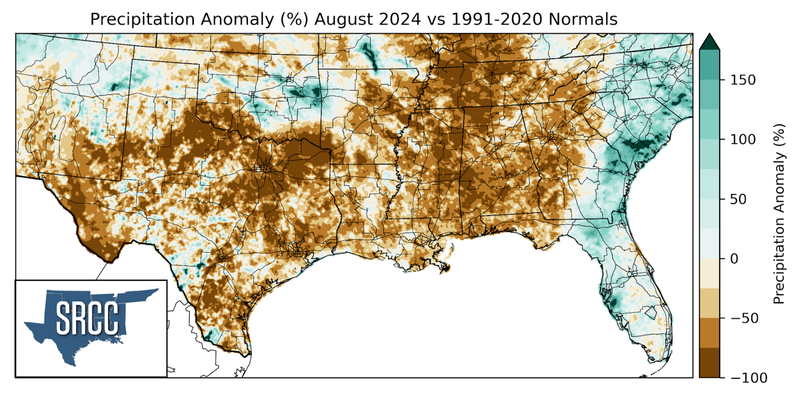
This August, the majority of the Region was fairly dry, experiencing precipitation totals below normal. Although, central and eastern Oklahoma did see above-normal precipitation totals this month, as much as two times the normal amount in eastern Oklahoma. The monthly total for this area was as much as ten inches. Most of this rainfall occurred on August 12th when just under four inches of rain fell in Sequoyah County, OK as a slow-moving storm system dumped buckets on the area. Regular precipitation was seen along the Gulf Coast this August as sea breeze thunderstorms moved inland. These storms led to monthly rainfall accumulations from three to as much as eight inches right along the coast. Apart from these areas, the Southern Region struggled to see precipitation this August thanks to high pressure systems and other factors. The majority of the Region saw less than one inch of precipitation, and totals were even less in Texas where areas of the state saw less than half of an inch. Although rainfall totals for the month were overall less than normal, their spatial distribution followed what one would expect for August.
Drought:
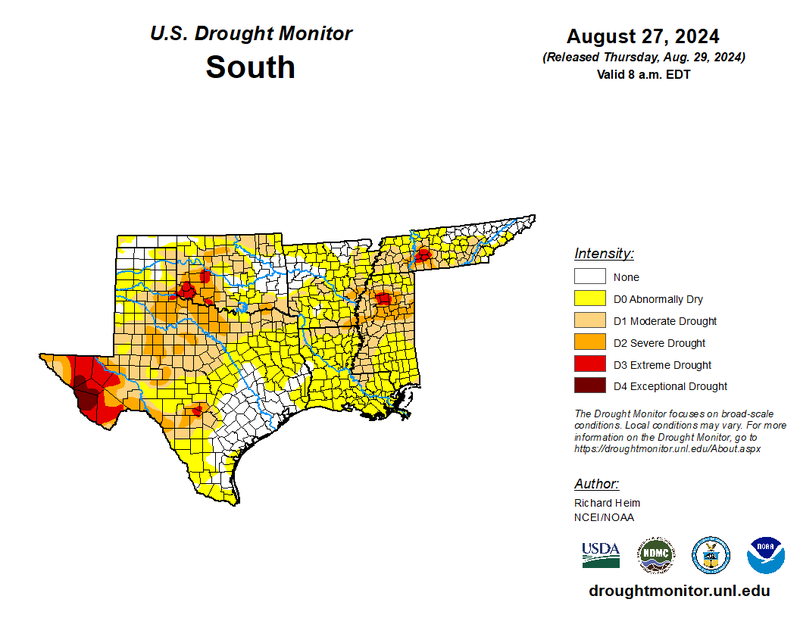
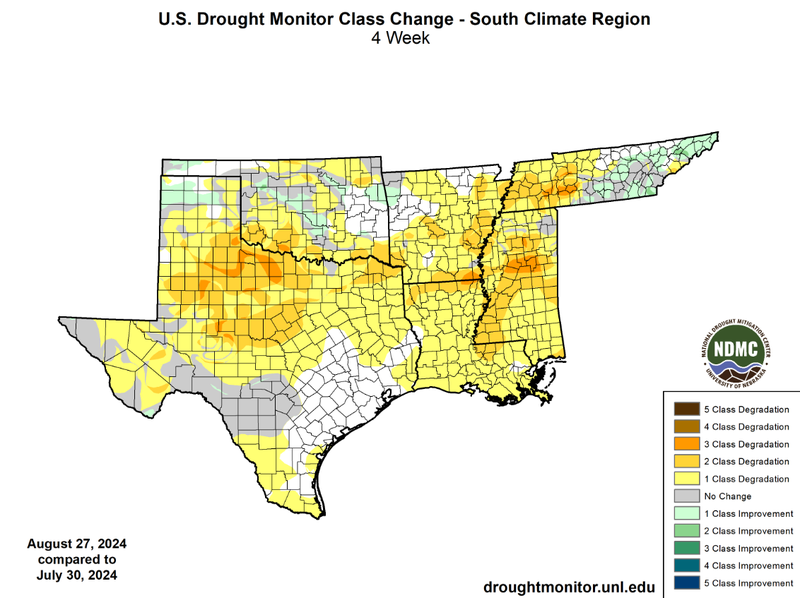
The Southern Region saw little rainfall and hot temperatures throughout the month. Although, along the Gulf Coast and in eastern Oklahoma precipitation totals of five inches and above were observed for the month. It was in eastern Oklahoma near the border of Arkansas where precipitation totals were three inches greater than normal in August. This resulted in some scattered one-class drought improvements across Oklahoma. Improvements were also seen this month in the Great Smoky Mountains of Tennessee. However, the majority of the region saw below normal precipitation totals, leading to large-scale drought degradation across the region. Drought degradations occurred across Texas, southwest Oklahoma, Louisiana, Mississippi, Arkansas, and Tennessee as a lack of rainfall contributed to decreasing topsoil moisture. Early in the month flash drought conditions were present in west-central Texas; two-class and even three-class degradation were observed as much of that area went weeks without a drop of rain. More two and three class degradation occurred in central Mississippi and western Tennessee; these areas were highlighted for flash drought risk from the end of August into the beginning of September, so one can expect drought to continue to worsen in the two areas. Mississippi has seen overwhelming drought expansion and degradation this August. At the end of July, 34% of the state was experiencing drought conditions compared to the entire state by the end of August. Drought has also worsened rapidly as at the end of July less than one percent of the state was experiencing severe to extreme drought (D2-D3); that number is now up to 22%. This drought is not going anywhere soon as east-central Mississippi needs over 13 inches of rain to terminate drought conditions. Unfortunately, the trend of drought expansion is not limited to Mississippi. The Southern Region ended July with 39% of the region experiencing drought conditions compared to now 83% at the end of the month. Drought severity has also gotten worse with a 10% increase in severe to exceptional drought (D2-D4).
According to the U.S. Monthly Drought Outlook for this September, drought is expected to remain yet to improve in far West Texas, northern Mississippi, parts of southwest Texas and areas of west-central Texas. Drought is expected to persist in Oklahoma and parts of far West Texas. Finally, drought removal is likely in parts of west-central Texas and areas of Mississippi and Tennessee.
